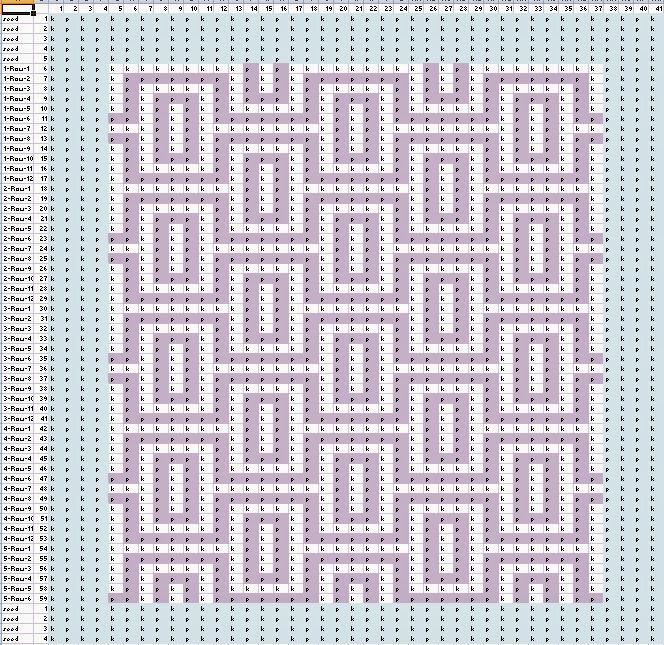I have this book that has patterns for making a series of blocks or baby wash cloths and assembling them into this blanket, if desired.
This is the sort of thing I do when I don't understand something. I am in the middle of knitting my second ultra-simple project, a dish cloth, nothing but plain garter stitch. You begin with three stitches, then start adding one stitch each time you knit a row until you have a total of 53 on the needle. Then you start decreasing one each row until you're back down to three and you bind it off. Basically knitting a square across the diagonal. Here's the first one I made, my first knitting project ever.
I made plenty of mistakes. Some I managed to correct, some I didn't.
The second one is going much better so far.
After I finish this one, I want to try to make something pretty. The book says the blanket blocks are easy. We'll see about that.
Here is a photo of the first block from the book:
It has a seed stitched border all around it, and the diamond pattern is knit with a series of knits and purls according to this cryptic set of instructions:
Pardon the green tint. My iPhone does that under fluorescent lights.
So I was having a hard time understanding what's what, especially since it seems to tell you to do the same thing multiple times. At the group meeting Tuesday night, I asked a very nice young lady named Emma to walk me through it, which she did.
Since I wanted to make sure I actually understood what she explained, I decided to make an Excel spreadsheet with each of the stitches on it.
The first instruction is to cast on 41 stitches. Then work five rows of seed stitch. Once you have completed the five rows, each of the following rows is to begin and end with 4 seed stitches. They are all in blue.
Once in the pattern area, the instructions say to do a certain number of knits and purls in each row. For instance, the instruction for 1-Row-1 (The first row of a set of 12 rows that is later repeated 3 1/2 times) reads as follows: *k9, p1, k1, p1; rep from * once, k9. So I typed in the Ks and Ps for the first set highlighted in light pink, and then I copied the second set and made it darker pink. The standalone k9 at the end is not highlighted.
I continued following the instructions for Rows 2-12 in the same way, alternating between pink and green. Then I copied all 12 rows into 2-Row-1 through 4-Row12. Then I copied the first six rows into 5-Row-1 through 5-Row-6. Finally, I added another four rows of seed stitch at the end per the instructions.
To make sure I had done it right, I made another copy of the worksheet and added conditional formatting in the pattern area to highlight only the purls. This is the result:
Whaaa??? Them ain't diamonds. Them are squares. What have I done?
Each time you finish a row, you knit the next one from the other side of the fabric. You are alternating between the right and wrong sides. So the first row of the pattern is on the wrong side (since it is the sixth row of the whole project, and your first row of seed stitch was on the right side.) Therefore, the second row of the pattern is on the right side.
A knit stitch on the right side is a purl stitch on the wrong side, and vice versa. So I made another worksheet copy and selected the odd-numbered rows and used find-and-replace to turn all the Ks into Ps and all the Ps into Ks. This is what happened:
Dun-da-da-dah!!! I do understand it! I'm going to actually knit it over the long weekend and see if I can get it done without mistakes using some cheap acrylic yarn. Now that I have a blog, I'll bore you with the details here instead of on Facebook. Good evening, everyone.








No comments:
Post a Comment